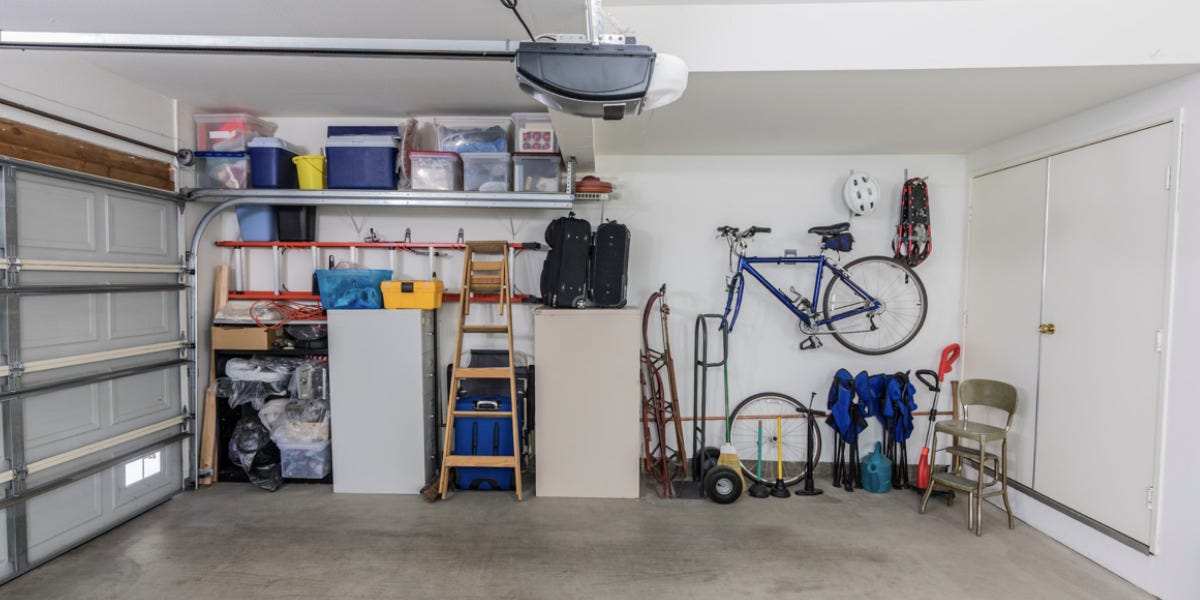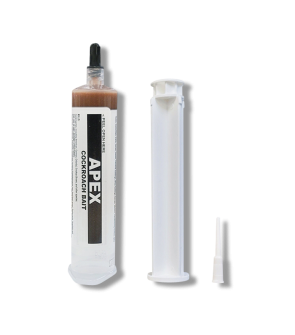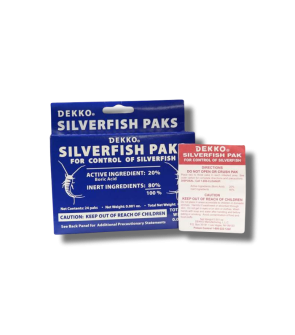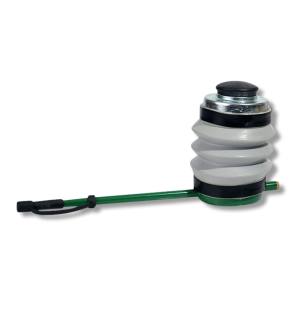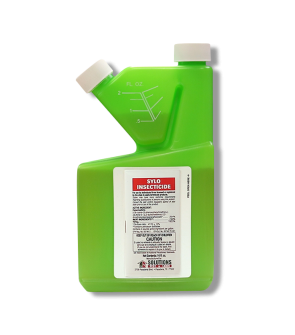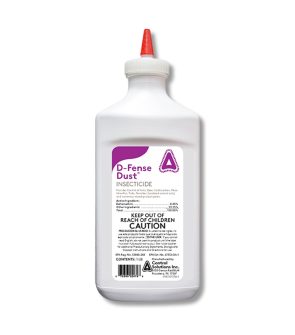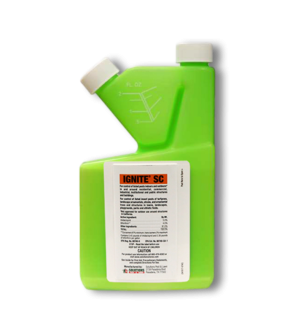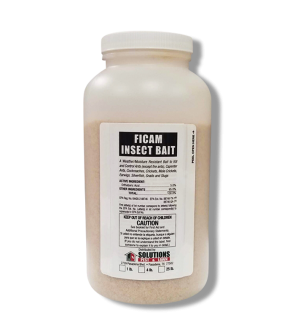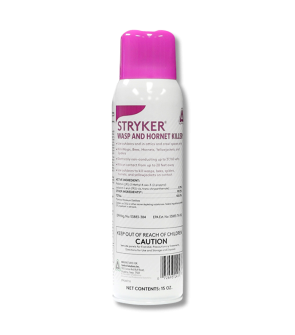Insects in Garage / Shed
Most Effective Products
Common Insects in Garages/Sheds
Insects love quiet undisturbed places with plenty of nooks and crannies, which garages or sheds readily provide. This is especially true when you store clothing, carpets, paper, cardboard boxes, food, moisture from water damages or consistent humidity, or other certain items that are of interest to pests in these sites.
By far the most common garage and shed pests are carpenter ants, cockroaches, crickets, ground beetles, pillbugs, silverfish, subterranean termites, and wasps. Understanding their habits, preferred sites, and effective elimination techniques can help to control and prevent these bugs in your garage and shed.
If you want to get rid of a pest in your garage or shed that is not listed here, you can contact our customer service team by phone or email for professional advice and product recommendations.
Carpenter Ants
Like termites, carpenter ants can go unnoticed in garages and sheds until it is a costly situation to correct. Carpenter ants do not eat wood like termites do, instead they hollow it out with their mandibles as they tunnel or chew through the wood.
Even though carpenter ants take several months to cause significant structural damages their excavation activities can compromise the wood.
Depending on how large the colony is and how much time has passed, they can weaken the support for that structure.
Identification
Carpenter ants are commonly large black colored ants, but depending on the species they can also be black, brown, red, yellow, orange or a combination of black and red. They measure between 0.25 to 0.75 inches long.
These ants have 3 segmented bodies, narrow waists, and elbowed segmented antennae. Worker ants are usually wingless, but reproductive carpenter ants called “swarmers” have four wings with the hind wings being shorter than the front.
Inspection

Carpenter ants live in damp wood within garages and sheds, which could be near door or window frames, plumbing/electrical penetrations, pillars, joints, wall studs, roof shingles, or near sinks.
Treatment
Step 1: Bait Into the Nest
 To remove carpenter ants in garages or sheds, you will first need to eliminate their colonies by applying a bait insecticide as a crack and crevice treatment and perimeter treatment.
To remove carpenter ants in garages or sheds, you will first need to eliminate their colonies by applying a bait insecticide as a crack and crevice treatment and perimeter treatment.
Ficam Insect Bait is an orthoboric acid based granule bait made to be weather and moisture resistant to control carpenter ants and where they nest. To use this product, you will need to use a bulb duster.
For crack and crevice treatments and exterior perimeter applications, use 6 oz. of Ficam Insect Bait per 100 sq. ft. Also, apply ½ to 1 oz. of product directly into the cavity of hollow trees and stumps.
Treat exterior perimeter areas of the garage or shed in a band 2 to 4 feet wide around the entire building. Also apply product in a 2 to 4 foot band around all trees, stumps, firewood piles and other locations where carpenter ants may nest.
To do crack and crevice treatments, insert the stem of the duster into the gaps, cracks, and crevice and apply 2 to 6 puffs per lineal foot.
You may need to drill holes to gain access into wall voids and under cabinets.
Step 2: Chemical Treating Outside

Supreme IT is a broad-spectrum insecticide concentrate designed to kill carpenter ants and a wide range of other pests within several days of treatment and for up to 90 days after application.
To use Supreme IT, you will need to use a handheld pump sprayer. Determine how much Supreme IT to use by measuring the square footage of the treatment area. To do this, measure the length and width of the treatment area in feet then multiply them together (length X width = square footage).
To repel and kill carpenter ants, use 1 fl. oz. of Supreme IT in 1 gallon of water per 1,000 sq. ft.
To mix, fill the sprayer with half the amount of water, add the measured amount of Supreme IT, then add in the remaining amount of water. Close the sprayer tank lid and shake until the solution is mixed.
Spray 3 feet up the garage or shed wall and 3 out from it on the ground next to it. Be sure to also spray around the window frame, door frame, eaves, plumbing penetrations, cracks, crevices, and voids and the trunks of trees and shrubs near it.
Do not treat firewood with this product.
Step 3: Limit Nesting Opportunities
 Clear out fallen branches across your yard, remove rotting tree stumps, and prune overgrown tree branches hanging above or near garages and sheds to keep carpenter ants away.
Clear out fallen branches across your yard, remove rotting tree stumps, and prune overgrown tree branches hanging above or near garages and sheds to keep carpenter ants away.
Water-damaged wood and insulation should be replaced in your garage and shed, and you will need to store firewood away from these structures on metal stands off the ground.
Control of these attractants will better help control and prevent carpenter ants from entering your garage or shed.
Cockroaches
The most common cockroaches in garages and sheds are Asian cockroaches, German cockroaches, and oriental cockroaches.
They contaminate food, destroy paper, and impart stains from their waste and leave behind offensive odors to surfaces they contact.
Identification
For a visual reference check out the image above: On the left is the Asian cockroach, the middle is the German cockroach, and on the right is the oriental cockroach.
Asian cockroaches are light brown to tan in coloration and measure ½ inches long. They have two dark parallel bands that run lengthwise behind their heads combined with this and their coloration makes them easily confused with German cockroaches.
Asian cockroaches are different from German cockroaches in looks as seen in their wings. An Asian cockroach's wings are longer than its abdomen and more narrow than German cockroaches.
A German cockroach wing is the same length of its body and will go past its body like Asian cockroaches.
Muck like Asian cockroaches, German cockroaches are light brown in coloration with two dark parallel lines just behind their heads and measure up to ½ of inch in length.
Unlike Asian cockroaches, German cockroaches prefer to run since they are weaker fliers and can be darker in coloration.
Oriental cockroaches are dark brown to nearly black in coloration and have a smooth, shiny body. Other than their dark coloration, they have no other distinctive features. The males are shorter in size at 1 inches and the females are 1.25 inches.
Male oriental cockroaches have wings while the females have shorter non-functional wings below her head. Both genders are incapable of flight, instead they will slowly run to their next location.
Inspection
Asian cockroaches are mainly outdoor pests, but since they are attracted to light they sometimes travel into sheds or garages.
They prefer to hide in damp, shaded locations during the day which in your garage or shed could be under boxes, stored firewood, piles of papers, and in or behind cabinets and shelves.
German cockroaches favor warm, humid areas that are close to food and water. In garages and sheds, these sites are garbage cans, recycle bins, inside of boxes, bags, appliances, pet food, and crevices in the floor and walls.
Oriental cockroaches live in dark, damp places like drains, woodpiles, trash cans, under washing machines, under the stairs, and the crawl spaces beneath garages or sheds.
Treatment
Step 1: Eliminate Clutter

Make sure that counters, floors, surfaces of objects, and underneath objects are dusted or swept to remove dirt, dust, and other debris. Wipe up spills when they happen in these areas.
Store pet food, fruit, vegetables, and other food items in sealed plastic containers. You will also need to switch out cardboard boxes used to store personal belongings for airtight plastic containers as well to limit roach activity.
Step 2: Reduce Moisture

Seal cracks, crevices, and other voids on the inside and outside of these structures with caulk to reduce moisture and entry for cockroaches.
Replace weather-stripping around window and door frames to avoid further leakage and pest entry.
With no dependable food or water source cockroaches will be less likely to enter.
Step 3: Use Roach Baits

Apex Cockroach Gel Bait is a high-performing gel bait targeting several different roach species with up to 11 different food attractants for complete control.
Depending on the roach species you are trying to control in garages and sheds the rates will vary.
To control small roaches like German cockroaches, you will need to apply 3 drops of Apex Cockroach Gel Bait, or approximately 0.0047 oz. per square yard.
To control larger roaches like the oriental cockroach, you will apply 5 drops of product, or approximately 0.0071 oz. per square yard.
Place Apex Cockroach Gel Bait on an index card to avoid staining then set it under furniture, cabinets, sinks, water heaters, on baseboards, and directly into cracks and crevices.
Step 4: Use Sprays or Foggers

Using a liquid concentrate like Supreme IT will prevent them from getting into furniture stored in garages and sheds and even keep them from coming under the door.
To permanently get rid of cockroaches in garages and sheds, apply 1 fl. oz. of Supreme IT in 1 gallon of water per 1,000 sq. ft.
Spray 3 feet up the exterior wall of the garage or shed and 3 out from it on the ground next to the structure. Make applications around window and door frames, eaves, soffits, and electrical/plumbing penetrations.
Pay special attention to any cracks, crevices, and voids around the structure as well during applications.
Crickets
Besides their annoying chirping, crickets can cause damage to household items like carpet, fabrics, paper, and more stored in garages and sheds.
Many times, they come in large numbers and also have the potential to carry harmful bacteria so it’s important to remove them before they become harmful to your health and belongings.
Identification
Crickets come in various colors from yellowish-brown, to tan, to dark brown depending on the species. They have cylindrical bodies, rounded heads, five eyes, and two powerful hind legs that help them to jump quickly.
Inspection
Crickets will usually be found in damp, dark places like under appliances, cabinets, shelves, furniture, and in the corners of garages and sheds.
They can be found in boxes or near sites that contain food trash, decaying plant life, grains, seeds, fruits, clothing, blankets, carpet, fabric, wool, cotton, furs, silks, and other synthetic fibers stored in these structures.
Treatment
Step 1: Spray Supreme IT Outside
To keep crickets out of garages and sheds, apply Supreme IT around the entire outside perimeter of these sites as well as any cracks, crevices, or voids you see.
Use 1 fl. oz. of Supreme IT in 1 gallon of water per 1,000 sq. ft. To mix and spray this product you will need to use a handheld pump sprayer.
To create a barrier, you will need to spray 3 feet up the outside wall structure and 3 feet out on the ground near it. Spray around window and door frames, eaves, soffits, cracks, crevices, and other voids on the foundation and on tree trunks and shrubs near the structure.
Step 2: Treat Cracks and Crevices
Once the outside is treated, treat indoor cracks, crevices, and voids in the garage or shed with D-Fense Dust Insecticide.
D-Fense Dust Insecticide is a waterproof insecticide dust that gives an effective knockdown against crickets and other pests. If undisturbed, then it will create a residual barrier to keep crickets out for up to 8 months.
Use 2 to 3 grams of D-Fense Dust Insecticide per square yard or 0.5 lbs of product per 1,000 sq. ft. to control crickets.
You may need to use a bulb duster to make applications.
Apply this product thoroughly to all areas where these pests crawl and hide such as wall voids, around pipes, along baseboards, and cracks and crevices in walls, window and door frames.
Step 3: Seal Holes or Cracks
Eliminate cricket hiding spots and entry by sealing up all openings with caulk.
Check for cracks, crevices, and voids around the garage and shed foundation, walls, ceiling, window and door frames, and around plumbing penetrations.
Gaps around windows and doors may need to have the threshold and weather-stripping replaced.
Ground Beetles
Garages and sheds are prone to getting ground beetles because they are drawn to light and food sources emitted from these structures.
They do not bite or do any property damage, but some ground beetle species can release an offensive odor to defend themselves.
Other than that, they do not survive long indoors creating a nuisance of numerous dead pests throughout the garage and shed. If handled, ground beetles may also pinch people in self-defense.
Identification
Ground beetles are somewhat flattened and elongated in body shape with many species a metallic brown to black coloration.
Some species include a metallic blue, green, orange, red, yellow, or copper color.
They have 3 body segments: a small narrow head pointed forward with large eyes on either side, a sickle-like mandible and antenna, a mid body part, and the abdomen with ridged wing covers.
Inspection
Ground beetles are mainly outdoor pests that do not survive long indoors. These pests will crawl through cracks, crevices, and gaps in the garage and shed foundation, and openings around window or door frames to seek the light coming from within.
Once inside you will find them scattered across the floor or along walls near light sources. They prefer to hide in protected damp areas like under boxes, firewood, or other objects on the floor.
These pests are active at night and can also be found on the outside of garages or sheds with exterior lightning.
Treatment
Step 1: Fill Openings

Other entry points that might need to be filled can be found in the foundation walls, under siding, around window and door frames, soffits, and where plumbing enters.
Openings under window or door frames will need to have the weather-stripping and threshold replaced.
Step 2: Spray Residual Insecticide

For a general pest control and ground beetle treatment, apply 0.33 to 1.0 fl. oz. of Supreme IT in 1 gallon of water per 1,000 sq. ft.
First spray entry points like doors, windows, and other voids that pests can use to invade with a coarse spray pattern. Then, spray your garage and shed’s outer perimeter by spraying 3 feet up the structure and 3 feet out.
Step 3: Maintain Yard
Lastly, practice good yard maintenance around your garage, shed, and throughout your property.
Remove any leaves, logs, rocks, and other plant debris that may provide shelter for ground beetles.
Water plants properly with no more than an inch of irrigation once per week. Do so early in the morning to allow enough time for the plant to soak up moisture. By doing this you limit conditions for this pest and the insects they feed on.
Prune overgrown foliage and dead parts of plant near your garage and shed. You will also need to mow when turf reaches a height of 3 inches to limit breeding and feeding activities of ground beetles.
Move firewood out of these structures and store it away from your garage and shed off the ground on a metal stand.
Pillbugs
Pillbugs live outdoors, but they may occasionally wander into sheds or garages. These pests do not bite people or damage its structure or possessions stored in them, but they are nuisance by their presence.
In large enough numbers, the amount of dead pests in these buildings and the number of dead plants can cause anyone to ask what to do about pillbugs in garages and sheds?
Identification
Pillbugs are often called rollie pollies because they roll into a tight ball when threatened. They are classified as crustaceans and measure between ¼ to ¾ inches long. Pillbugs have brownish to gray colored bodies, seven pairs of legs, and overlapping armored plates.
Inspection
Pillbugs will survive in garages and sheds only if there is moisture present. They remain hidden under cardboard boxes, wet mulch bags, log piles, leaves stored in bags, in the soil of plants kept in garage/shed, and other objects stored on the ground and around plumbing.
Treatment
Step 1: Reduce Moisture

Drying off areas that collect water inside your garage and shed will work wonders against pillbugs. Seal all cracks, crevices, and other voids around the wall, window and door frames, baseboard, ceiling, and other entry points with caulk.
Replacing the weather-stripping and threshold around window and door frames of garages and sheds will further prevent pillbugs from entering.
Outdoors, watering early in the day with no more than an inch of irrigation once per week allows the soil to dry before these pests become active.
Clear away any fallen leaves and plant debris, rocks, and mow the turf when it reaches 3 inches in height. Prune overgrown tree and shrub branches to reduce shade and moisture.
Step 2: Apply Supreme IT
Treat around the entire outside foundation of your shed and garage with a residual insecticide like Supreme IT. This product may be used as a perimeter treatment, but can also be used as broadcast treatment across lawns and ornamentals.
Apply 0.25 to 0.5 oz. of Supreme IT per gallon of water per 1,000 sq. ft. of lawn and ornamentals. For better coverage and less application, we recommend using a hose-end sprayer such as the Solutions Hose End Sprayer.
For perimeter applications, spray 3 feet up the structure and 3 feet out from the foundation. Be sure to treat around window and door frames, plumbing penetrations, and into cracks, crevices, and other entry points.
To treat lawns and ornamentals, spray the top and bottom of the foliage leaves until wet, but not to the point of runoff.
Silverfish
While moving things in your garage or shed, you may have stirred up silverfish. These silver bugs that move like fish nibble on mostly everything they get into from wallpaper, newspaper, cardboard boxes, adhesives, grains, packaged foods and the list goes on.
Identification
Silverfish are flattened metallic silver colored pests that are elongated and oval in shape. They are easy to recognize due to their 3 long tail appendages, 2 antennae, and fish-like movements.
Inspection
Silverfish are fond of garages and sheds since they contain numerous amounts of undisturbed items like furniture, clothing, paper, upholstery, cardboard boxes, old books, carpets, artwork, grains, and pet food.
These pests will be found under, near or in these items. During they day, they can also hide in cracks, crevices, and voids.
They also enjoy high relative humidities, which is why they can also be found under plumbing and sinks within these structures.
Treatment
Step 1: Clear Clutter

Dispose of unnecessary paper and damaged items then place all the untouched objects into these airtight containers.
Move containers away from walls to expose pathways and limit cover for silverfish.
Step 2: Seal Food and Reduce Moisture
Unfortunately, stored food items should be disposed of to prevent a new wave of infestation. Otherwise new food items and pet food should also be placed in an airtight plastic container.
A reduction in water and humidity is particularly helpful in eliminating silverfish. Dry out or ventilate garage and shed areas by opening windows, installing a dehumidifier, and repairing leaking plumbing fixtures.
Since these pests can travel through the smallest of openings, we recommend sealing these entry points with caulk will deter them from entering.
Entry points both inside and outside of these structures from cracks, crevices, and voids on walls, baseboards, window and door frames should be sealed.
Step 3: Try Ficam Insect Bait

Use 6 oz. of Ficam Insect Bait per 100 sq. ft.
Spread this product evenly with a bulb duster into these entry points where silverfish activity is most noticed.
Be sure to apply into eaves, along walls, baseboards, under and behind pallets, around plumbing penetration, cracks, crevices, and other wall voids.
Step 4: Lay Out Traps
Additional traps like Dekko Silverfish Packs may be necessary in more open areas and spaces where pesticides cannot be applied.
Dekko Silverfish Packs is a pre-treated glue trap that offers safe, and effective silverfish control. Specially designed with a corrugated interior that traps silverfish and allows those that escape to spread the material to other pests.
About 2 to 3 of Dekko Silverfish Packs will cover up to 100 sq. ft.
Place these traps in areas where you have seen silverfish. Common places in garages and sheds could be under sinks, on shelves, or inside drawers.
Step 5: Perform Perimeter Application

To get rid of silverfish in garages and sheds, apply 0.33 to 1 oz. of Supreme IT mixed in a gallon of water per 1,000 sq. ft.
Create a perimeter by spraying 3 feet up the structure and 3 feet out from the foundation. Also, spray around window and door frames, plumbing penetrations, and directly into cracks, crevices, and voids.
Subterranean Termites
Subterranean termites invade and eat wood and cellulose materials, causing extensive damage in structural parts of garages and sheds.
Their presence can go undetected for long periods of time until they swarm years after infesting these buildings.
Identification

Subterranean termite swarmers have 4 wings and are honey-brown, dark brown, or black in coloration. Swarmers are easily defined from other winged ant species by their straight antennae, thick waist, and equally sized wings.
Inspection
Subterranean termites create irregular mudtubes across walls, floors, and foundations from the ground near wooden sites that are moist. Typically, these tubes are found on the outside of the garage and shed, but can be found indoors.
Treatment
Step 1: Eliminate Moisture

Repair or replace leaking faucets, pipes, and exterior ac units, or shingles on roof.
Prune overgrown trees and shrubs above or near your garage and shed to eliminate moisture as well. This also helps to limit pathways for termites to travel.
Step 2: Create A Termite Trench
Dig a trench approximately 6 inches deep and 6 inches wide around garages and sheds. You will need to use a bucket to perform a trench treatment.
Mix 5 fl. oz. of Supreme IT with 4.9 gallons of water to have a 5 gallon emulsion.
Pour the mixture into the trench and immediately fill it back with dirt until it is turned into mud. Repeat the process for each side of your home until the entire perimeter of your home is covered.
Wasps
The most encountered stinging pests on or in garages and sheds are paper wasps and mud daubers.
These flying pests often establish nests in or around these structures, which creates safety concerns, as they will defend their home or themselves if needed.
Identification
For a visual representation: the one on the left is a mud dauber and the one on the right is a paper wasp.
Mud daubers are yellow to black colored wasps with a thin, thread-like waist. They have 6 legs that hang freely in flight and measure between ½ to more than an inch.
Paper wasps are mostly brown to black with yellow or red markings and black wings. Their body is slender, narrow waist, and two pairs of wings that fold up when not in flight. In flight, all 6 of their legs will dangle their legs.
Inspection
Mud daubers and paper wasps build their nests under the eaves, roof overhangs, corners of walls, and in walls of garages and sheds.
Treatment
Step 1: Locate the Nest
For a visual image: the nest on the right is from a mud dauber and the one on the right is a paper wasp.
Determine where paper wasp and mud dauber nests are located. However, you may ask what does a paper wasp nest look like or a mud dauber nest look like?
Paper wasp nests are made from brown paper and have an open honeycomb or an upside down umbrella shape.
Mud daubers create nests made out of one or multiple skinny mud tubes with varying lengths. Each tube has one singular round opening at the end that remains sealed until the larvae are ready to hatch.
To easily remove and better treat mud dauber nests, we recommend spraying it with water to soften it.
Step 2: Treat Nest

Stryker Wasp and Hornet Killer is an effective wasp killer aerosol spray that delivers fast control against stinging pests on contact. Designed to treat these nests from a safe spraying distance of 20 feet.
We recommend waiting until the evening since this is when a majority of the wasp infestation are inside nests.
Simply shake and point the can in an upright position towards the nest. Spray from a safe distance of 6 to 15 feet from the nest at an angle that is not directly underneath it.
Treat the nest until it is wet and spray any paper wasps or mud daubers you see.
Step 3: Perform A Barrier Treatment

Sylo Insecticide is a synthetic pyrethroid insecticide concentrate that provides immediate control against wasps and other insects. Once applied, it creates a residual barrier around treated areas for up to 90 days.
Apply 0.5 fl. oz. of Sylo Insecticide per 1,000 sq. ft.
Spray along eaves, and any entry points like around doors and windows. Then, conduct a barrier treatment by spraying along your structures outer perimeter going 3 feet up the structure and 6 to 10 feet out.
We recommend you make this application quarterly to maintain year-round control.
Key Takeaways
What Are Common Bugs in Garages and Sheds
- The most common bugs in garages and sheds are carpenter ants, cockroaches, crickets, ground beetles, pillbugs, silverfish, subterranean termites, and wasps.
How to Get Rid of Bugs in Garage and Shed
- We recommend addressing all moisture issues, eliminating food sources, laying out traps, and bait insecticides to get rid of bugs in garages and sheds.
How to Keep Bugs Out of Garage
- To keep bugs out of garages and sheds, you will need to eliminate outside food and water sources. On a quarterly basis, you will need to apply a residual insecticide around the structure as a perimeter treatment.
